The Story of Culture and Arts
- Image resource of Korean history
- Documents from History TextBooks
- Culture & Art Stories from Korean History
- Culture & Art Stories from Korean History - Korean
- National Institute of Korean History
- History net
- About the site
- Introduce
-
Numerous topics related to Korean culture and art are mentioned in middle and high school national history textbooks, but most of them are briefly described by era, making it difficult to understand their concepts, transition processes, and characteristics.
<Culture & Art Stories from Korean History> produces and provides video materials based on expert commentary on the flow, change process, characteristics and characteristics of each major topic in the field of culture and art in Korean history.

Scenario
Beginning of rice farming
Full entry into an agrarian society
Era of production economic system begins in the Bronze Age
People now had things to protect.
This is why mountain fortresses were built using stones
for defense purposes.
Country of Mountain Fortresses
Korea is often called the country of mountain fortresses.
Why do you think Korea came to be called that?
People began to build fortresses when farming became widespread
and conflicts over the distribution of products arose.
Although people strengthened their defenses by building wooden barricades,
they had to come up with something else
when the invaders began burning the barricades.
The solution they came up with was the earthen fortress.
Earthen fortress stronger than wooden barricades
Developed techniques to build a fortress
that can withstand wind and rain
Rammed earth technique
Wooden structures are constructed
then clay soil and sandy soil are layered alternately.
Each layer is rammed down using a wooden pole
with a diameter of 10 centimeters.
In its early days, earthen fortresses were defense facilities for settlements.
As the wars grew more intense, people began to build fortresses on top of a mountain,
a major transportation point where it is easy to withstand a siege or repel an invasion.
Korea is a mountainous country. Consequently, mountain fortresses are what people often built.
The era of mountain fortress began in earnest.
City wall, palace wall and mountain fortress
Over 2,000 mountain fortresses in Korea
Wall built to protect the capital
City wall
- Outer wall: Wall that surrounds the whole city
- Inner wall: Wall that surrounds the palace
The palace wall and the city wall that protects the palace
Mountain fortress, military facility for defense purpose
Types of Mountain Fortresses
Ancient mountain fortresses built on top of the mountain
City wall and palace wall built on a flatland or hill
○ Minbojipseol
Shin Gwan-ho, a general in charge of training in Emperor Gojong’s reign
His book, “Minbojipseol,” mentions geographical features
suitable for building mountain fortresses.
1. Gonobong type: Lay of the land that is high on all sides with hollow center
2. Sanbong type: Wide and flat summit with steep slopes all around
3. Samobong type: Location with a high peak at the back
4. Maan type: High on both sides with low and narrow middle
Excavations were carried out in the Japanese Occupation era
and the mountain fortress is categorized into Valley inclusion type and Mountain framing type.
Valley inclusion type: Fortress that has a valley within its walls
Mountain framing type: Mountain fortress with its wall built near the summit of the mountain
The fortress walls can be categorized into flatland type, mountainous type and flatland-mountainous type.
Most of fortress walls in Korea are mountain fortress types.
It is because the mountain fortress is influenced by the natural lay of the land.
Fortress wall facility
Haeja: Moat dug around the fortress wall
Often found in flatland and flatland-mountainous types
Ongseong: Semi-circular bastion wall built around the fortress wall
o deter invaders from attacking the fortress gate
Chiseong: Part of the fortress wall protruding outward to form a square shape
bastion that soldiers can use to protect themselves from an attack
while effectively attacking the enemy
Yeojang: Low battlement built above the fortress wall
It is a structure built to allow one to protect oneself while effectively attacking the enemy.
Yeojang is also called yeodam, yeocheop, ta and seonggakwi.
Yeojang seems to have been in use since the Three Kingdoms period
but it is uncertain whether earthen walls had yeojang.
Most stonewalls have yeojang.
Noticeable subsidiary facilities of the fortress wall
Tunnels that connect the interior and exterior of the wall
Fortress gate
Remnants of structures still left within the walls
Structure site
Fortress wall, one of the most important components that make up the stone fortress
It is composed of fortress stones and gates.
The shape and size of the stone varies, depending on the era.
Baekje
External surface is built with fortress stones and the inner side is built with rammed earth.
Range works
The size of the fortress stone is the same on the bottom as it is on the top.
Using stones cut in rectangular shape, range works are carried out line by line.
Thanks to using cut stones, there is no gap between fortress stones.
Silla
Built using cut stones
Uses flat plate stone
Fortress walls built using thin and oblong fortress stones shaped like a brick
3:1 elongated fortress stone
Stone fortress of Silla
Samnyeonsanseong Fortress, Boeun
Chungju Sanseong Fortress, Chungju
Ondalsanseong Fortress, Danyang
Jeokseong Fortress, Danyang
Mountain Fortresses of Silla
Characteristics of stone brick type fortress stone
Jeokseong Fortress, Danyang
Chungju Sanseong Fortress, Chungju
Daemosanseong Fortress, Yangju
Icheon Seolseongsanseong Fortress
Thickness of the fortress stone: 15-20cm
Width of right and left sides: 40-60 cm
Fortress stone cut like a brick
The types of fortress gates
The passage that connects the inside and outside of the fortress wall
During the Three Kingdoms period, fortress gates are built
where it is difficult to access.
After the Unified Silla period,
gates are built in places with easy access.
| Walk-in gates | Gates with trapdoors |
| The ground inside and outside the gate are flat and connected in a straight line. | The ground inside the fortress is higher but the ground outside is lower, needing the use of stairs or ladder to enter the fortress. |
| No stepped pulley | Stepped pulley |
| Located on a flatland or hill | Often located in a valley |
Administrative government facility
Late Goryeo Dynasty, Early Joseon Dynasty
Eupseong, a town fortress, was built to repel the Japanese raiders.
The location of the facility is important
considering the seriousness of the situation at the time.
According to “Revised and Augmented Korean Gazetteer,”
a geography book from the early Joseon Dynasty period,
administrative facilities were built on mountain peaks
in the regions they controlled
in the late Goryeo Dynasty and early Joseon Dynasty.
Characteristics of Korean Mountain Fortresses
Ancient mountain fortresses each had food storage facility
and were the seat of government in normal times and the base of defense in emergencies.
Mountain fortresses were advantageous in carrying out military actions because they were defense facilities that suited Korea’s mountainous geography.
They were located in major transportation bases. This was to lure the enemy in deeper by locking down inside the fortress and cutting off the enemy’s supply routes.
When the Japanese raiders’ invasions grew frequent in the Goryeo and Joseon Dynasties, new defense facilities appeared to protect the people who lived along the shoreline.
Town fortress
When the order to demolish town fortresses were given by the Japanese Empire
in 1910, most were damaged.
Currently, only a few such as Haemieupseong Fortress, Naganeupseong Fortress,
Gochang Moyangseong Fortress remain.
Fortress wall built stone by stone
Walls built to form a fortress
The people of the Goguryeo Dynasty built Cheolli Jangseong Great Wall
to protect their families, their people and their country.
-------------------------------------
Script advisor: Seo Jeong-seok
Scenario composition: Ahn Hyeon-jin, Kim Min-sang
Voice actor: Oh Soo-gyeong
MC: Ju Hye-bin, Hwang Ba-eul
Illustration: Lee Kwang-il
Research material support: National Museum of Korea, Gyeongju National Museum, Cultural Heritage Administration, Hanseong Baekje Museum, E-Museum
Director: Kim Hyeong-woo, Lee Hyeok-roh, Lee Yeon-sik
Planning and Production: Arirang TV Media
Architecture
12 films-
 Fortresses - walled towns in Korea09:15
Fortresses - walled towns in Korea09:15 -
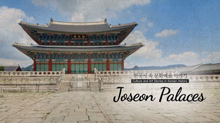 Joseon Palaces08:46
Joseon Palaces08:46 -
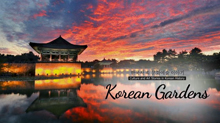 Korean Gardens08:34
Korean Gardens08:34 -
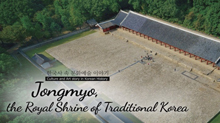 Jongmyo, the Royal Shrine of Traditional Korea09:05
Jongmyo, the Royal Shrine of Traditional Korea09:05 -
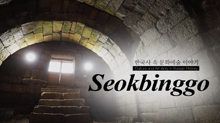 Seokbinggo, or Stone Ice Storage08:18
Seokbinggo, or Stone Ice Storage08:18 -
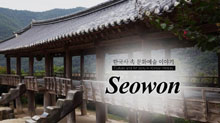 Seowon, a Neo-Confucian Academy08:22
Seowon, a Neo-Confucian Academy08:22 -
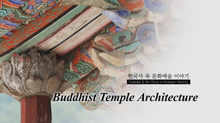 Buddhist Temple Architecture08:28
Buddhist Temple Architecture08:28 -
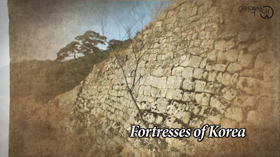 Fortresses of Korea09:12
Fortresses of Korea09:12 -
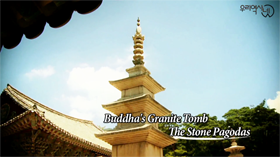 Stone Pagodas07:13
Stone Pagodas07:13 -
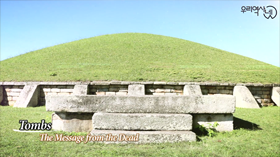 Tombs09:36
Tombs09:36 -
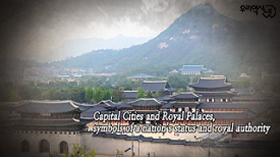 Capital Cities and Royal Palaces08:55
Capital Cities and Royal Palaces08:55 -
 Roof Tiles07:48
Roof Tiles07:48

